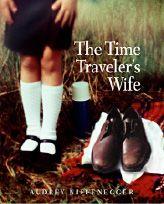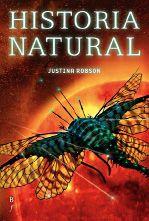Science Fiction: The 101 Best Novels 1985-2010 (39 page)
Read Science Fiction: The 101 Best Novels 1985-2010 Online
Authors: Damien Broderick,Paul di Filippo

72
Audrey Niffenegger
(2003)

UNTIL YOU READ
this elaborate time-twisting invention, you might be tempted to dismiss
The Time Traveler’s Wife
, best-selling debut novel by Audrey Niffenegger, as romantic confectionary. It is considerably more than that, despite the flaws in any sf book written by someone who’s redesigning the screwdriver so she can invent the steering wheel. It is a powerfully mimetic novel grounded in a strange premise, fantastika enriched by copious detail drawn from the real world of the author.
That, at any rate, is one’s impression, noticing certain telling aspects of the world not always included in commercial sf. What distinguishes
The Time Traveler’s Wife
from, say, a clever traditional sf entertainment like Poul Anderson’s
There Will Be Time
(1972) is its very ordinariness, its refusal, by and large, to use this abnormal intrusion as an opportunity to showcase the time traveler’s technical prowess, political
nous
or prejudice, trans-historic destiny. Here is a revealing interview quote from
Niffenegger
:
I like science fiction, but it’s not really what I read. So I wasn’t trying for science fiction… what I was initially interested in was having one fantastical or strange thing and then regular reality. There’s this idea that you change one thing about the world and everything else moves around it. This idea that you’re allowed to play with reality somewhat. In my art, I’m somewhat surrealistic…. I like changing things.
[1]
What Niffenegger was reaching for was not “surrealism,” although she didn’t know it, but rather a term and a strategy devised by Rudy Rucker—
transrealism.
[2]
Sf is all about changing things, but what happens when you are telling a contemporary story—even one where a six-year old girl is likely to be visited by her forty-something, stark-naked future husband—and an external event overwhelmingly intrudes into your own life, into history, into your book. “The part that happened around 9/11 was interesting,” Niffenegger says,
... because, of course that happened when I was almost done with the book and I thought, wow, I can’t really let this go un-addressed. For the most part real world events don’t really make it into this book because I didn’t want to date it and I didn’t want it to be about the world. It’s really about this relationship. I figured, you have this gigantic thing and if you don’t at least nod at it, it’s going to seem glaring in its absence.
This is one version of the insistence of the empirical, the return not of the Freudian repressed but of the everyday, in this case amplified into gritty terror that serves in the narrative, for a brief moment, as an icon of the traveler’s uncanny, dreadful, fated, powerless standpoint, ever moving, never moving. Niffenegger comments, “It’s something that bugs me about actual science fiction, this effort to provide all the answers and make everything work out very neatly.” But of course her novel
is
“actual science fiction,” at least if
Flowers for Algernon
is sf. Still, she is right to feel qualms; more than
actual science fiction
, her novel is
actual transrealism,
a coloration of sf enlivened and enriched by uncertainty, familiarity used against itself to provide a jolt not only of shocked surprise but also, paradoxically, of recognition.
Both of which are features of this emotionally moving slipstream novel. Librarian Henry DeTamble and his once and future wife Clare Anne Abshire (“this astoundingly beautiful amber-haired tall slim girl… this luminous creature”) take turns narrating their time-slipped love. Henry has been flipped into the past hundreds of times from childhood, stranded
naked as a jaybird, up to your ankles in ice water in a ditch along an unidentified rural route…. Sometimes you feel as though you have stood up too quickly even if you are lying in bed half asleep. You feel blood rushing in your head, feel vertiginous falling sensations. You hands and feet are tingling and then they aren’t there at all… and then you are skidding across the forest-green-carpeted hallway of a Motel 6 in Athens, Ohio, at 4:16 a.m., Monday, August 6, 1981, and you hit your head on someone’s door, causing this person, a Ms. Tina Schulman from Philadelphia, to open this door and start screaming because there’s a naked, carpet-burned man passed out at her feet.
That classic, patient, self-ironic narrative is one of the two voices of the tale, but really both comprise a single civilized middle-class point of view (wealthy upper middle-class, in Clare’s case) relaying the kind of love affair seldom recounted outside genre sf, between two entwined lovers and their sometimes wretchedly haywired world. Unlike fantasy treatments of time slippage (by Jack Finney or Richard Matheson, say), Henry’s quirk is eventually attributed to a very rare chromosomal disorder, Chrono-Displacement, which gets passed along to his and Clare’s daughter Alba.
At 10 years of age, when they meet in the future, this child tells him that he has been dead for five years. So Henry knows in advance that he will die when he is 43. While time travelers have a modicum of free will (or so it seems), they cannot change their timeline to avoid perils, since that would entail altering the future’s known past, something forbidden by the laws of physics. Inevitably, then, the story is deeply tragic—in the mode of fated Greek tragedy but more personal and realistic—and its denouement both disquieting and painfully poignant.
But for a Chrono-Displaced Person, the future can sometimes touch the past beyond death:
She is an old woman; her hair is perfectly white and lies long on her back in a thin stream, over a slight dowager’s hump. She wears a sweater the color of coral. The curve of her shoulders, the stiffness of her posture says
here is someone who is very tired,
and I am very tired, myself. I shift my weight from one foot to the other and the floor creaks; the woman turns and sees me and her face is remade into joy….
As is ours, perhaps through tears.
73
Justina Robson
(2003)

NATURAL HISTORY
was runner-up for 2004’s Campbell Memorial award, a distinguished feat attained previously by such luminaries as Kurt Vonnegut, Ursula K. Le Guin, Ian Watson, John Crowley, Michael Bishop, Lucius Shepard, Kim Stanley Robinson, Neal Stephenson, and Greg Bear (three times). British Justina Robson, trained in philosophy, had already made her mark with
Silver Screen
(1999) and
Mappa Mundi
(2001), both shortlisted for the Clarke award. She suggests the main question raised in this space opera of Forged (modified and augmented human stock) and Unevolved (same old earthly us) is whether, “because of your physical form,” you are locked into a specified identity. In particular, “Whether you can still possess a human identity if you are some sort of radically different gigantic cyborg type of creature that lives among the stars.”
Voyager Lonestar Isol is just such a cyborg or MekTek, adapted for deep space and heading for Barnard’s Star when she slams into exploded alien detritus that pits her hull savagely and leaves her apparently doomed. She awakens in the debris an advanced M-Theory engine made of silicon Stuff that in a trice whips her 11-dimensionally to an enigmatic world near the galactic hub, and then home:
“Stuff is a technology and it is also people, indivisibly fused…. It is intelligent, responsive, compassionate, but it does not have an identity of its own…. Stuff
watches.
It chooses points where life of a certain developmental stage is sure to come across it, seeding the universe with points of access.”
Ironhorse Timespan Tatresi, a kilometer-long solar system bulk carrier, takes her to feathered Corvax, formerly a Roc, Handslicer class, for investigation, on behalf of a burgeoning insurgency of Forged against Monkeys or Hanumaforms (us again, their creators). The Forged are not slaves, exactly. Their own consoling ideology poses them as sole custodians of meaning and true freedom (their Form and Function, designed teleologically into them) that the Old Monkeys lack, dull creatures of Darwinian happenstance that we are. All that holds them back from decamping to a home world of their own, a seemingly abandoned earthlike planet found by Isol, is the regard in which they hold their mythic Forged Citizen “father-mothers.” Even this is a simplification, as Aurora quickly explains to Zephyr: “Clinging to Function is a puritan ideal.... Form is likewise irrelevant; only what you can contribute to the lives of others should be a measure of a soul’s value.”
Here is a striking echo of today’s conflicted ideologies over, say, reproductive, gay, and transgender rights to choice, and a foreshadowing of the shape these tussles will likely take in any early transhuman or posthuman future.
More generally, Robson’s political setting, which at first resembles black slaves against white masters, or Third World against First, or workers against capitalists, strikes the habituated sf reader as an echo of that enormous mythic future sketched so hauntingly by Cordwainer Smith, Underpeople ranged against the Lords of the Instrumentality (a comparison we also drew earlier, in Entry 31, with Walter Jon Williams’
Aristoi
). Smith’s modified animal people struggled for redemption and self-determination against the true and augmented humans of Old Earth, Norstrilia and the rest of his crypto-Christian universe left unfinished due to his early death. Here, Tom Corvax is an aging, damaged birdman tech and VR bootlegger, dreaming a banned virtual human life.
Soon we find a Jamaican cultural archaeologist, Zephyr Duquesne, taking her swift if squeamish flight inside the flesh and metal body of an immense Passenger Pigeon person, Ironhorse AnimaMekTek Aurora. Impossible not to recall the E’telekeli eagle-man messiah from Smith’s long rebellion; just as impossible, grinning, not to recall “Blackie” Duquesne, E. E. “Doc” Smith’s anti-hero from the primitive
Skylark
space operas. Is this surfeit of Smiths and Forged a nod to that immense repository of sf iconography, whimsy, heartbreak and literary tools shaped for getting us into the inconceivable and back? No; it’s either an accident or a convergence of memoryless sf with very old images from folklore. Robson comments: “I have never read any Cordwainer Smith. Ever. I never read any Al Reynolds until this week. I never read any Bruce Sterling. Or Doc Smith. For many of my teenage years when I was doing my formative reading I didn’t dare actually read sf, so I used to imagine it off the covers and blurbs.”
[1]
For all its conceptual underpinnings of problematic identity and struggles for independence or existential meaning, Robson’s novel is no improving homily but a New Space Opera ripping yarn. If her redeployment of numerous wheels does cause some grinding of the axles, some bald infodumping, it adds a certain freshly spun aroma to her saga of machined folks seeking Paradise Regained and finding... well, as so often in sf, epiphany and transcendence, of a sort.
